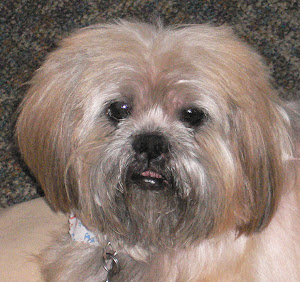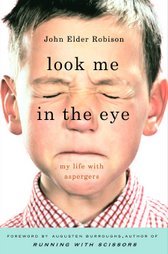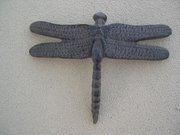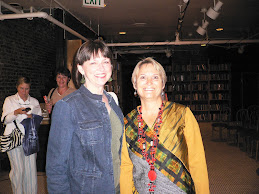Erica has asked about my outline and I thought this might be a good topic for a post. Logically, an outline begins at the beginning and follows through meticulously until the end with each step delineated along the way. A typical outline for a research paper would be:
I. Main topic
A. Important subtopic
B. Important subtopic
1. Detail
a. Sub-detail
b. Sub-detail
c. Sub-detail
2. Detail
3. Detail
a. Sub-detail
b. Sub-detail
II. Main topic
A. Important subtopic
B. Important subtopic
1. Detail
2. Detail
Conclusion
The main topic (chapter) in a novel could be the introduction of a primary character or plot line. Sub-plots or transitory situations and secondary or tertiary characters could be the important subtopics, details and sub-details. All of this would be interwoven to lead to the conclusion or final chapter. It’s like climbing a ladder one rung at a time.
While I have an extremely logical mind, it doesn’t always progress naturally from point A to point B to point C. It likes to jump around so I use the expanding outline (popcorn bag) method. I started with the beginning and the ending then filled in the middle.
I knew who my main character would be and what she was like – even her name – so I wrote her profile first. Then I developed family, friends, co-workers and incidental characters that would logically interact with her and did a profile for each. The level of detail depended on the importance of the person to the story.
For places, I created pictures (sometimes cut out of magazines) of what it would look and feel like; i.e. how big/small, clean/dirty, green/brown, light/dark, shabby/ritzy, friendly/snobby or calming/tense.
I woke up one morning and knew the beginning and ending. From there I started developing ways to move from one to the other. I kept coming up with scenarios that could possibly happen along the way. I just wrote them all down in no particular order without censorship. I figured if it came to mind it was fair game. I put each idea on a different page.
When I had all these components and the ideas slowed to a trickle, I opened my dining room table to its full 92” length, spread out all the papers and started trying to put them into an order that flowed well from the beginning to the ending including where to introduce certain people and places. That really helped point out some holes. I’m still working on filling some of them, but I feel more comfortable with everything now.
There are some people who say they just sit down and the ideas flow from beginning to end. They don’t need outlines. I admire and envy them. Maybe someday I’ll be in that category but right now my massive paper pile/outline really helps. Now I just have to sit down and start filling in all the details and adding all those rich descriptions I’ve been learning about from my fellow bloggers.
How do you work?
Tuesday, August 14, 2007
Subscribe to:
Post Comments (Atom)










10 comments:
That sounds like a really good system, anti wife. I start with the main character, too. While I don't outline, I do know the beginning and ending before I begin, it's the ride from point A to point B that's the surprise. As I go along, new characters will pop up as will scenes that often surprise me - for each character I take the time to do a character sketch before proceeding (it starts out rough, description, birthday, immediate family members) I'm very character driven in both my writing and reading and I find that on revisions my characters are much more fully formed by the end of the rough draft than they were when I started early chapters... editing is where I fill them out as the process of rough draft let me get to know them fully.
There are things to be said for setting the character down on the page and letting them dictate the story - the creation process is invigorating because I'm as surprised as anyone by the turns in the story... on the other hand, there's a lot of writing that winds up unused or unneeded... it helped me to get to know where my characters were coming from, but the reader doesn't need it in the story...
I've taken some time now in my revisions and jotted down rough outlines for each chapter all the way through - almost a reverse outline as it's already written... this helped a great deal because it let me see an overview of the entire novel and quickly pinpoint the unnecessary characters (a few of them and I really liked them so I was a bit bummed about that) and also let me see where I left dangling subplots and relationships which need something to strengthen the readers' understanding of how important they are to the main characters.
My climax was at just the right spot with just the right amount of tension, but the ending was too abrupt (a hate long farewells, but this ending would have annoyed me as a reader).
Next time around I'm going to do it a little closer to your method. I already have some of the characters and the basic plot for my next one - I think I'll take some time and map it out before writing... we'll see which way works better for me.
I so wish I could outline. I used to be a total pantzer--though I do write chronologically. But now I write synopses for works in progress, even short stories. Incidently, I quit starting short stories without knowing the ending--I've got a hard drive full of great starts.
I know the characters a little bit but discovering them during drafting is most of my fun. I learn about them mostly through dialogue and their voices start to come through--they just respond in perfect character generally, though in revisions I push them in certain directions. Tougher to do is separate POVs--that takes a lot of thought.
Oh, and I also reverse outline, Merry, every book, listing internal/external conflicts, conflict or resolution, and tension level for each scene. It takes friggin forever.
I ditto this with merry: While I don't outline, I do know the beginning and ending before I begin, it's the ride from point A to point B that's the surprise. As I go along, new characters will pop up as will scenes that often surprise me - for each character I take the time to do a character sketch before proceeding
That you can outline like that is amazing. I think I outline in the car and while I'm doing chores, so when I finally have computer time, I'm actually able to write. I have never, ever sat at a computer with nothing to say. I'd rather not write than associate a computer with a writer's block.
I also have a separate file called 'extra text' where I jot notes about dialog, scenery, etc that I want to explore at a later point.
Cheers,
Chris
Merry, SSS & Chris,
I'm not sure what I do is technically outlining. It's more like just writing and sorting. Some of my pages only have one or two sentences on them and others are almost full. But when I spread them all out and put them into some kind of logical order, they do become like an outline that guides me through the story.
With my short attention span I have this fear of drifting off into another story line if I don't have something to keep me moving towards the ending.
Yay, my question spawned a post! Thanks so much for a fabulously detailed answer!!! =)
I've been meaning to try the magazine/collage method and haven't yet. (Mostly because I have no magazines to try with... I'll hafta go buy some!)
When I first think of a story, usually it comes to me either as a high concept hook or as an opening scene. Either way, I know who my main characters are before I know anything else, just like you.
I tend to only do character interviews for my main protagonists, but I can see how it would be a good idea to have character sketches for everyone. I usually create a file with each character's name and then add to it as I "learn" new things about them while writing.
But I'm not a complete pantser! Before I start a story, I need to know how it ends, and what the first major turning point is I'm working toward. And then once I know that, I usually come up with a bunch of ideas on how to get from the opening scene to the first turning point.
Usually I put them on color coded sticky notes on a storyboard, and/or make a spreadsheet/textfile. I also tried the index card method for a few stories. That wasn't bad either, but the sticky notes on posterboard thing is so much more visual. I can see where everything is and goes (or should be!) at a glance.
You have inspired me to try the magazine thing for places... I will let you know how it turns out!
Erica,
And you have inspired me to try the storyboard. I kind of do that with my DR table, but having the storyboard with different colored post-its would be a very visual way to outline the story. I do tend to spend a lot of time on defining my characters because my ideas tend to be very character driven.
I love sharing ideas with everyone!
This is such a great discussion... and it makes me feel scads better that other writers are the write by the seat of their pants variety (I thought it was just my lack of organizational ability ;-)
Character driven seems to be paramount to most writers here - if none of you have tried it, I had a lot of fun blogging in character for a while. The great thing is that the character is interactive with commentors, so it takes some of the scenario out of the writer's hands and makes you really think about how they would respond or react.
If you were ever stuck on a character or they just aren't fully there - it's a great exercise to flesh them out.
Great idea to blog as a character. jeez, my Aidan would be fun. Kaelin, not so much. He'd be all one-word responses.
I also have a book of clippings and notes, just a big spiral with pockets. It's got pics, maps, drawings, notes, anything that pertains to the book(s).
My stories always start with the characters and evolve from them. I'm reading Elizabeth George's Write Away. Seeing her process has given me lots of ideas to flesh out my own process.
Wow - I think I may have to cut, paste and print that list!
Cheers
Post a Comment